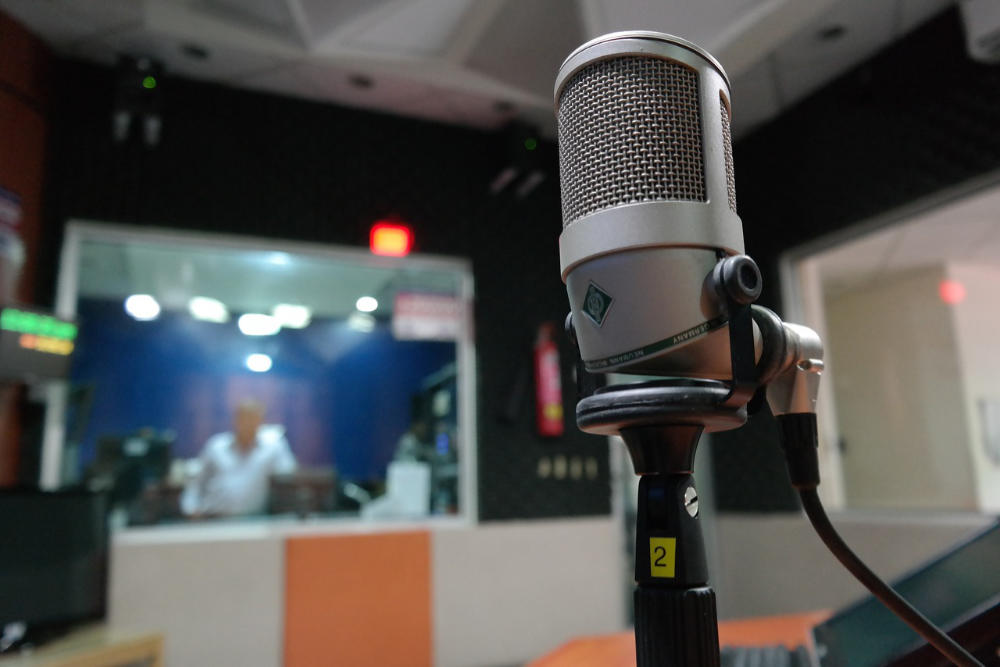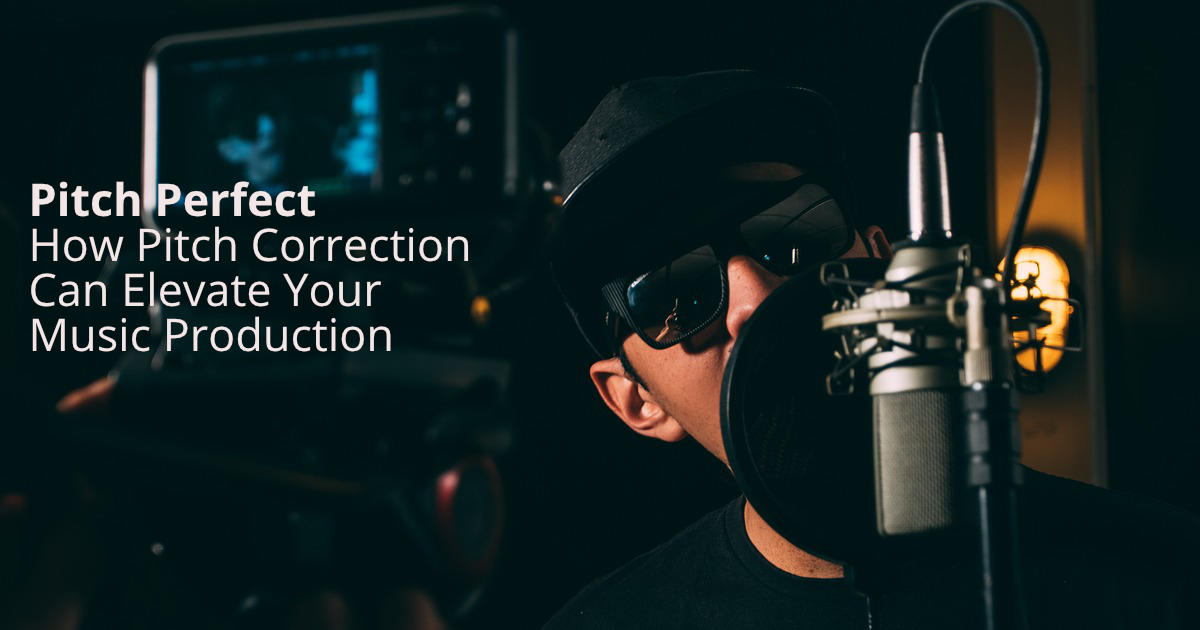Estimated reading time: 6 minutes
Pitch correction has become an indispensable tool in modern music production, revolutionizing the way vocal performances are captured and enhanced. Understanding the nuances of pitch correction, its impact on music production, and the various techniques and software available can elevate the quality of your recordings and bring out the best in vocal performances.
Table of contents
Understanding Pitch Correction in Music Production
Pitch correction refers to the process of adjusting the pitch of individual notes or vocal sample tracks to ensure they are in tune with the desired musical scale. This can be achieved through the use of specialized software and plug-ins that analyze the input signal and make real-time or studio time corrections to the pitch of the audio track. By understanding the basics of pitch correction, music producers and engineers can significantly improve the overall quality of vocal recordings and achieve the desired tonal consistency.
Demystifying Pitch Correction: What Is Pitch Correction and How Does It Work?
Real-time Pitch Correction vs. Studio Time Correction
Real-time pitch correction involves processing the input signal as it is being recorded, allowing for immediate adjustments to be made to the vocal performance. On the other hand, studio time correction involves post-processing the recorded acapella vocal tracks to fine-tune pitch imperfections. Both approaches have their unique advantages and can be employed based on the specific requirements of the music production process.
| Real-time Pitch Correction | Studio Time Correction |
|---|---|
| Immediate adjustments during recording | Post-processing for precision |
| Enables on-the-fly vocal tuning | Offers meticulous pitch refinement |
| Ideal for capturing spontaneous performances | Allows for detailed pitch editing |
Vocal Performance Basics
To fully grasp the significance of pitch correction, it is essential to understand the fundamentals of vocal performances. Basic vocal techniques such as breath control, vocal resonance, and pitch modulation play a crucial role in delivering captivating performances. The ability to maintain consistent pitch and convey emotion through vocal expression forms the foundation for effective pitch correction and enhancement.
Basic Vocal Techniques
Effective breath control and vocal projection are essential for delivering powerful and emotive performances. Mastering techniques such as diaphragmatic breathing and vocal warm-ups can greatly improve the overall quality and control of vocal performances. Additionally, understanding the nuances of pitch modulation and intonation can contribute to the expressiveness of the vocal delivery.

The Impact of Poor Pitch on a Performance
Poor pitch control can significantly detract from the impact and emotion of a vocal performance. Inaccurate pitch can lead to a lack of tonal clarity and may undermine the overall musicality of the recording. By recognizing the impact of poor pitch and its implications on the final output, music producers can appreciate the value of pitch correction in rectifying these deficiencies.
- What Does Quantize Mean in Music – Unlocking the Rhythm
Understanding Note Pitches and Their Roles in Music
Each note pitch holds a distinct role in the musical context, contributing to the harmonic structure and emotional resonance of a composition. Understanding the significance of individual notes and their relationships within a musical scale is crucial for effective pitch correction. By identifying and correcting pitch discrepancies at the note level, music producers can achieve a harmonious and cohesive vocal performance.
Popular Pitch Correction Software
The market is replete with a variety of pitch correction software and plug-ins that cater to the diverse needs of music producers and engineers. These tools offer a range of features and functionalities, enabling users to achieve precise and natural-sounding vocal tuning and special effects. Familiarizing oneself with the popular pitch correction software can provide valuable insights into their capabilities and potential applications.
Advantages and Disadvantages of Pitch Correction Software
Pitch correction software offers a host of advantages, including the ability to correct note pitch in vocal recordings, create vocal effects, and enhance the overall sound quality. However, it is crucial to acknowledge the potential drawbacks, such as the risk of overcorrection leading to artificial-sounding results and the need for a nuanced understanding of the original pitch and the desired correction.
| Advantages of Pitch Correction Software | Disadvantages of Pitch Correction Software |
|---|---|
| Corrects note pitch in vocal recordings | Risk of overcorrection |
| Creates unique vocal effects | Potential for artificial-sounding results |
| Enhances overall sound quality | Requires understanding of original pitch |
Exploring Antares Auto-Tune for Vocal Sound Enhancement
Antares Auto-Tune stands as one of the most widely recognized and utilized pitch correction plug-ins in the music industry. Its real-time and graphical mode functionalities offer unparalleled control over vocal tuning and manipulation, making it a go-to choice for achieving perfect pitches and creative vocal effects. Understanding the capabilities of Antares Auto-Tune can empower music producers to explore innovative ways of enhancing vocal recordings.
Working with Celemony Melodyne
Celemony Melodyne represents a versatile and sophisticated pitch correction tool that allows for precise adjustment of individual notes within vocal recordings. Its intuitive interface and advanced pitch editing capabilities enable users to manipulate vocal performances with exceptional accuracy and subtlety. Delving into the intricacies of Celemony Melodyne can unlock a world of creative possibilities for vocal tuning and enhancement.
Related Posts
What Is Melodyne? How This Innovative Software Is Transforming Music Production
Best Autotune Plugin: Find the Perfect Autotune Plugin for your Music Production Needs
What is a Vocal Chain? Everything You Need to Know to Sound like a Pro
What is a Downbeat and Why Does it Matter?
What is a Vocalist? Everything You Need to Know
Conclusion
In conclusion, the significance of pitch correction in music production cannot be overstated. By comprehending the nuances of pitch correction, mastering basic vocal techniques, and exploring popular pitch correction software such as Antares Auto-Tune and Celemony Melodyne, music producers can elevate the quality of vocal recordings and imbue them with a captivating and polished sound. Embracing the power of pitch correction opens up a realm of creative possibilities, allowing for the seamless integration of perfect pitches and special effects into musical compositions.
FAQ
Real-time pitch correction involves making immediate adjustments to the pitch of the input signal during recording, while studio time correction refers to post-processing vocal tracks to fine-tune pitch imperfections after recording.
Poor pitch control can lead to a lack of tonal clarity and detract from the overall impact and musicality of a vocal performance.
Pitch correction software allows for precise correction of note pitch in vocal recordings, creation of unique vocal effects, and enhancement of the overall sound quality.
Antares Auto-Tune is renowned for its real-time and graphical mode functionalities, providing unparalleled control over vocal tuning and manipulation.
Pitch correction software enables music producers to achieve perfect pitches, correct note pitch discrepancies, and create compelling vocal effects, resulting in polished and captivating vocal performances.
Embrace the power of pitch correction and elevate your music production! Explore the capabilities of popular pitch correction software and unleash the full potential of your vocal recordings.
